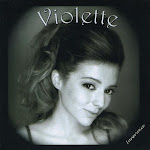I was thinking about what to do as my reading challenge next year. Having conquered the 52 books finished in a year, I could do it again, or increase the number, but it would be nice to do something different.
Early this year, there was a quiz circulating on Facebook based on a report by the BBC that claimed most people had only read 8 out of a list of 100 books. While it was a fun quiz, I found it a problematic measure of deep literacy. Some books were doubly listed--both Hamlet and The Complete Works of Shakespeare as well as The Lion, the Witch and the Wardrobe and The Chronicles of Narnia appeared, and the respective latter two are really collections of several books. The other issue for me was there was an emphasis on contemporary popular fiction, particularly British fiction. How could Dan Brown's The Da Vinci Code make the list when Mark Twain, Ernest Hemingway, and Nathaniel Hawthorne didn't? For that matter, why include several works by Austen and Dickens and omit those American authors. Granted, this list was British and no doubt aimed at the general public (hence the inclusion of recent popular works), but I wanted a more comprehensive list.
And so I created my own Literacy Quiz, which I've posted below. I tried to think of classic works of fiction, and include one book for each author. To be a "classic," it has to have stood the test of time, which I set at 50 years. I focused on literary fiction, but also included key works in genre fiction. I also tried to include books from different countries. I used the BBC list in part, but mostly searched lists of top books and recommended reading lists. Because I was only including one work from each author, I had a scoring system to give credit for reading a different book by the same author. In the end I listed 122 books, and left 3 spots to write additional books at the quiz-taker's discretion.
So what I'm thinking is that my goal for 2010 should be to read a certain number of classics. They should primarily be books on the list below, or at least by the authors on the list below. I'm not sure how many. I'm thinking 20, but that would be about a classic every two weeks, and most classics take longer to read. I may also stick with my 52-book total quota--I need my commercial fiction fix, and I want to stay current on contemporary fiction, as well as nonfiction. So perhaps I should start with 10, and if I finish them by June, I'll make it 20. I think this will be a good way for me to keep reading, but emphasize the classics.
I may also include authors or books not on the list. I didn't include plays, which is why Shakespeare isn't included, but there are a few of his plays I haven't read. Catch-22 by Joseph Heller was published in 1961, so it didn't meet the 50-year criteria, but it's very close. I simply didn't think of All Quiet on the Western Front by Erich Maria Remarque, and am actually currently reading it. Though I'll likely finish before the end of this year, I'm tempted to count it anyway since I've finished my 2009 challenge, and want to get started on the next one!
How to Avoid a Photoshop Disaster
7 years ago






























